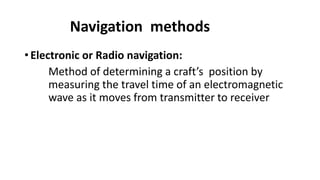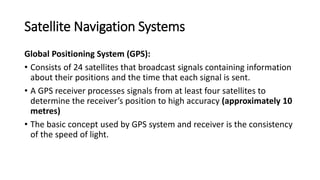The document outlines various navigation aids and systems. It discusses ground-based radio navigation systems, satellite navigation systems like GPS, and aircraft landing systems. It also defines key navigation terms and concepts. Navigation is defined as guiding movement from one location to another. Common navigation methods include piloting, dead reckoning, celestial navigation, inertial navigation, and electronic/radio navigation.



































